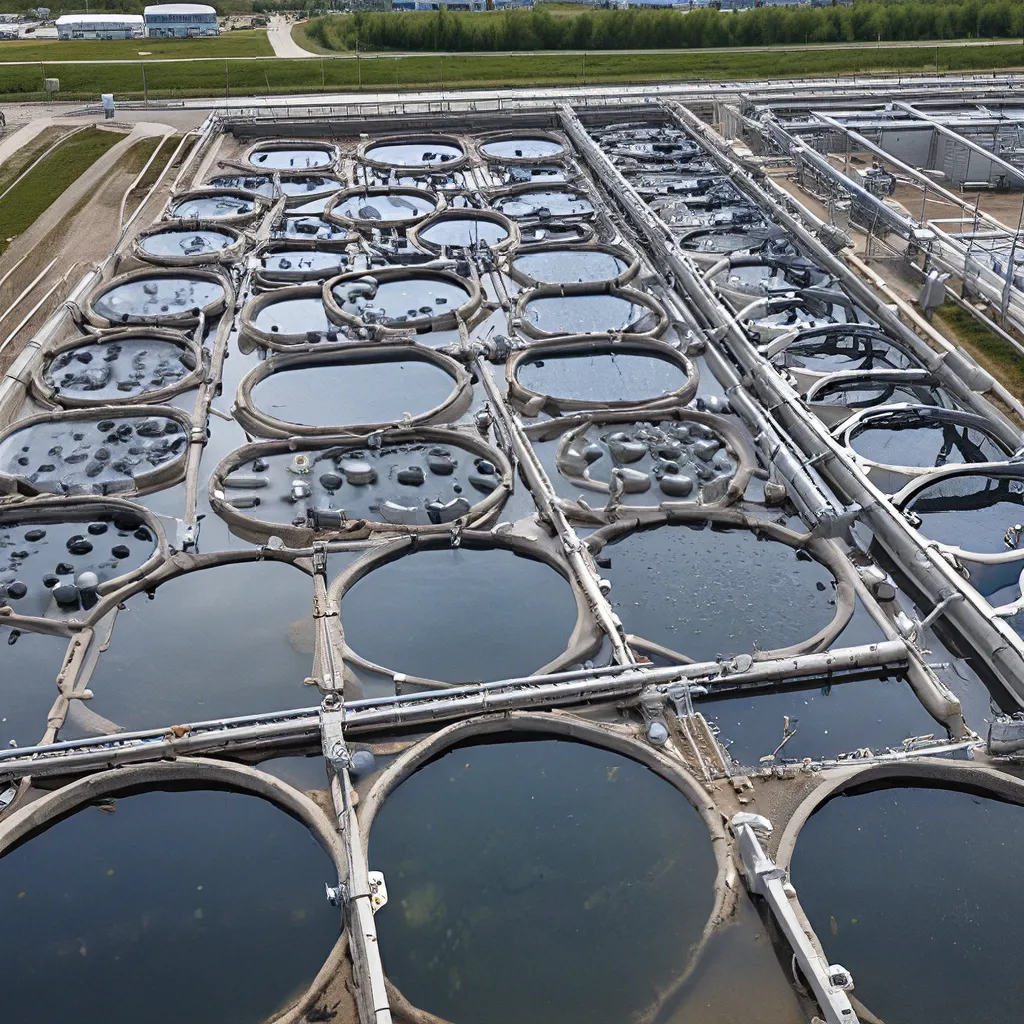
As a water enthusiast, I’ve always been fascinated by the innovative technologies that help transform our precious liquid resources into clean, safe, and sustainable water supplies. And when it comes to wastewater treatment, one technology that has really caught my eye is the Membrane Bioreactor (MBR).
Imagine a world where we could take the dirty, used water from our homes and businesses and turn it into a valuable, high-quality resource – all through the power of some cutting-edge membranes and microbes. That’s precisely what MBR technology is doing, and it’s revolutionizing the way we approach wastewater management.
The Rise of Membrane Bioreactors
I remember first learning about MBRs a few years ago, and I was immediately intrigued by how they combined the best of both biological and physical treatment processes. The basic idea is to use a suspended-growth bioreactor, similar to a conventional activated sludge system, but with the addition of a membrane filtration step.
This membrane, typically made of polymers like polyvinylidene fluoride (PVDF) or polyethersulfone (PES), acts as a barrier, separating the treated water from the biomass (the microorganisms responsible for the biological treatment). The result? A remarkably clean, high-quality effluent that can be reused for a variety of applications, from agricultural irrigation to industrial processes and even potable water supply.
But what really sets MBRs apart is their ability to handle a wide range of contaminants, including nutrients, pathogens, and even emerging pollutants like perfluoroalkyl and polyfluoroalkyl substances (PFAS). These “forever chemicals” have been a growing concern in recent years, and MBRs have proven to be an effective solution for their removal.
The Science Behind Membrane Bioreactors
The magic of MBRs lies in the synergistic relationship between the biological and physical treatment processes. The bioreactor component is responsible for breaking down organic matter, removing nutrients, and eliminating pathogens through the action of a diverse microbial community.
This community, often referred to as the “activated sludge,” is a complex ecosystem of bacteria, protozoa, and other microorganisms that work together to metabolize the pollutants in the wastewater. By carefully controlling the operating conditions, such as dissolved oxygen levels, sludge retention time, and hydraulic retention time, the performance of this biological treatment can be optimized.
But the real game-changer is the membrane filtration system. As the treated water passes through the membrane, the pores (typically between 0.1 and 0.4 microns in size) act as a physical barrier, trapping even the smallest particles and contaminants. This includes suspended solids, bacteria, and even some viruses, resulting in an effluent that meets the most stringent water quality standards.
One of the key advantages of MBRs is their ability to operate at higher mixed liquor suspended solids (MLSS) concentrations compared to conventional activated sludge systems. This higher biomass concentration allows for a more compact and efficient treatment process, reducing the overall footprint of the facility.
Additionally, the membrane filtration step eliminates the need for secondary clarification, which is typically required in traditional wastewater treatment plants. This not only simplifies the overall process but also enhances the reliability and consistency of the treatment, making MBRs an attractive option for municipalities and industries alike.
Tackling Emerging Contaminants with MBRs
As I mentioned earlier, the ability of MBRs to remove PFAS and other emerging contaminants is a significant advantage. These persistent and ubiquitous chemicals have become a growing concern in recent years, as they have been linked to a wide range of health and environmental issues.
Conventional wastewater treatment methods often struggle to effectively remove PFAS, but MBRs have shown promising results. The combination of biological degradation and physical filtration can effectively reduce PFAS concentrations to acceptable levels, making MBRs a valuable tool in the fight against this emerging threat.
In fact, a recent study published in the journal Science of the Total Environment found that MBRs were able to remove up to 99% of PFAS compounds from wastewater. This is a remarkable achievement, and it highlights the versatility and adaptability of this technology.
But PFAS are not the only contaminants that MBRs can tackle. These advanced systems have also demonstrated impressive nutrient removal capabilities, which is crucial for protecting sensitive aquatic environments from the effects of eutrophication. By effectively removing nitrogen and phosphorus, MBRs can help prevent the growth of harmful algal blooms and maintain the ecological balance of our water bodies.
The Future of Wastewater Treatment
As I dive deeper into the world of MBRs, I can’t help but be excited about the future of wastewater treatment. With their ability to produce high-quality effluent, reduce the environmental impact of wastewater discharge, and even generate a valuable resource for reuse, these innovative technologies are poised to play a central role in the sustainable management of our water resources.
And the good news is that the technology is constantly evolving. Researchers are exploring ways to improve membrane performance, increase energy efficiency, and enhance the overall cost-effectiveness of MBR systems. This means that as we move forward, the benefits of this technology will only continue to grow.
For municipalities and industries facing the challenges of water scarcity, emerging contaminants, and increasingly stringent environmental regulations, MBRs offer a compelling solution. And as a leading provider of water and wastewater services, Alpha Wastewater is at the forefront of this technology, helping clients navigate the complexities of advanced wastewater treatment and unlock the full potential of their water resources.
So, the next time you flush your toilet or turn on your faucet, take a moment to appreciate the incredible journey your water is taking – from the dirty, used liquid to the clean, sustainable resource that it becomes, thanks to the innovative power of membrane bioreactors.